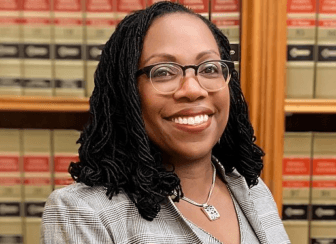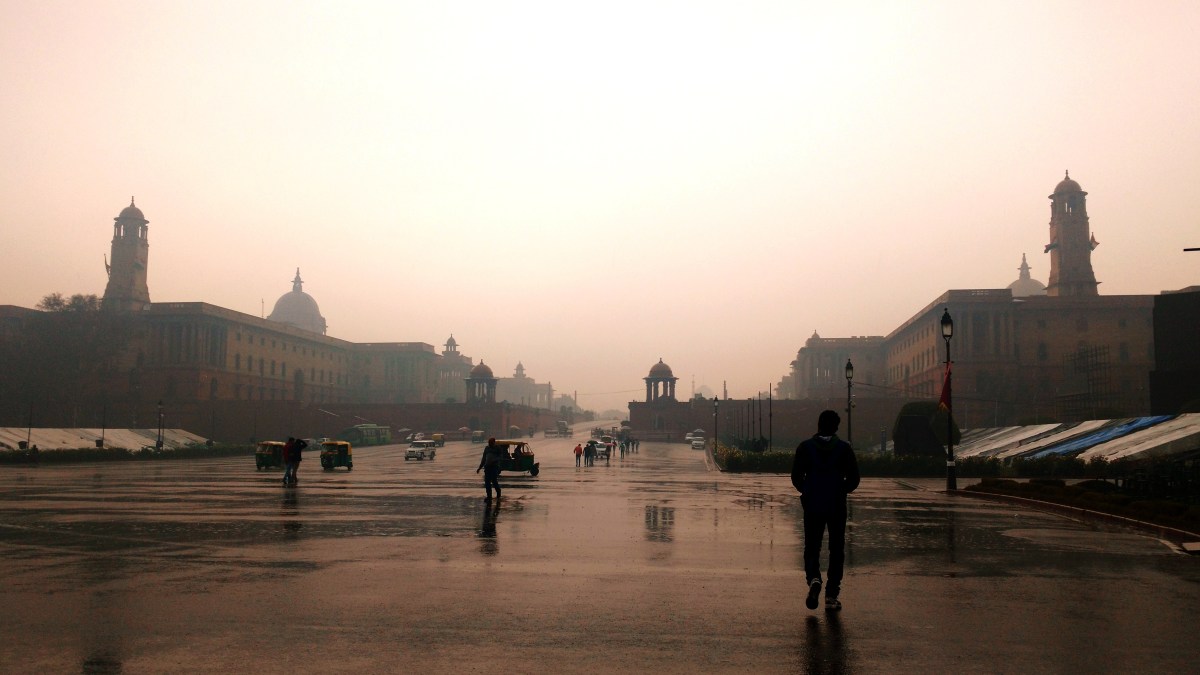Judge Jackson Can ‘Reset’ the Nation’s Conversation About Justice
If she is appointed to the Supreme Court, Ketanji Brown Jackson has the potential to challenge the sterile dialectic about the criminal legal system, writes TCR’s legal affairs columnist.


The Hon. Ketanji Brown Jackson. courtesy US District Court, Wash., DC
For over 50 years, discussions of criminal justice in the United States have settled comfortably into the same groove. Sooner or later, every question is treated as a tug of war between the partisans for Herbert Packer’s Crime Control Model and the advocates for his Due Process Model.
The Due Process advocates see the Crime Control Model as a conveyor belt:, an efficient machine for oppression. Crime Control Model adherents see the Due Process Model as an obstacle course that sacrifices public order to dainty protections for predatory criminals.
The media is satisfied to locate people—and policies, and rulings—at some point along an axis between those two poles, and then leave matters there.
You can watch this routine enacted as Supreme Court nominee Ketanji Brown Jackson’s Senate confirmation process unfolds.
Judge Jackson served at one point in her life as a federal defender. In our media and political traditions that job, when combined with her race and gender, says all we need to know about her. Automatically, she’s identified as a player for the Due Process team. There will be plenty of noise—jeering and cheering both—about that.
But if you settle for assigning Jackson a place on the familiar Packer-derived spectrum you might miss signs that she has the potential to challenge the whole sterile dialectic. Her single vote won’t change any rulings on the current 6-3 Supreme Court, but she might re-set the conversation.
‘She’s No Justice Breyer’
Judge Jackson’s actual work days as a defender (principally appellate work in a Federal Defender office in D.C., not the stereotypical, mammoth caseload, public defender trial work) are less important than the road she followed to get to that job.
Following graduation from law school, she had clerked for Justice Stephen Breyer.
After her clerkship, she worked as a lawyer for the United States Sentencing Commission, a mandarin body of experts that developed and administers the United States Sentencing Guidelines.
Justice Breyer had long been a central player in that effort—he is often referred to as its “godfather.”
To me, the most intriguing part of Judge Brown Jackson’s biography is that although she has been nominated to fill Breyer’s seat, she is no Breyer.
Judge Jackson, once she had tried the Sentencing Commission role, consciously rejected it. “I lacked a practical understanding of the actual workings of the federal criminal justice system,” she explained in response to Congressional questioning. She wanted to spend some time “serving in the trenches.”
The key fact is that—this reverses the usual process—it was only after trying to see things from the Olympian heights of the Breyer vantage point that Judge Jackson chose defender experience.
The Trolley Dilemma and the Footbridge Problem
There are two famous thought experiments, often featured (and usually mangled) on the internet, that illuminate the divergence between the Sentencing Commission job Judge Jackson left and the Federal Defender one she chose.
One test, developed by philosopher Philippa Foot, is called “The Trolley Dilemma”.
You are standing by the rails where the trolley tracks branch. A trolley is approaching at high speed, and down the branch it will follow stand five workmen. They are unaware of the danger, and you cannot warn them.
But there is a switch within your reach, and you can divert the trolley down another track.
On that track stands one lone worker. By throwing the switch, you can save five, but you will certainly kill one. Do you throw the switch? Studies indicate that most people would.
The U.S. Sentencing Commission is a paradigmatic Trolley Dilemma organization: “data-driven”, “evidence-based,” dedicated to perfecting this sort of utilitarian calculation.
A second scenario, developed by Judith Jarvis Thomson, features the same trolley, barreling toward the same five oblivious workmen. But this time there is no switch.
Now, you are standing on a footbridge over the track, and next to you there lounges an obese spectator wearing a heavy pack. If you tip him over onto the tracks his bulk will stop the trolley and save the five workmen, but the impact will certainly kill him.
Although the ultimate score is the same—five lives saved; one life taken—most people when confronted with “The Footbridge Dilemma”, do not choose to kill the man to stop the trolley.
The public defenders’ duty of loyalty to each individual client keeps the Footbridge Dilemma always in the front of their minds.
Juxtaposing the two thought experiments elevates a fundamental ethical question. Is an act—killing—right or wrong depending only on its consequences? Or is an act simply right or wrong?
Our debates treat the Trolley Dilemma and the Footbridge Dilemma as if they constitute alternative answers. You subscribe to one vision of moral decision-making or the other—you are one sort of person or another.
You care about the statistical outputs; or you care about the individuals.
Even so, although “Should this happen to Kalief Browder?” and “Should this happen to #38 on my docket list?,” might seem to some to present different issues, they consider exactly the same person.
For me, one of Judge Jackson Brown’s fascinating credentials is that she has shown that she is dissatisfied with both approaches.
What Judge Jackson Brown seems to recognize is that the Trolley and Footbridge problems don’t constitute answers; they pose inescapable questions.
To have any hope of operating a just criminal system you have to ask yourself both questions—they have to be held in permanent tension. The system has to attend to both the statistical vision and the individual narratives. In the communities the questions implicate not only the lives of the defendants and their families, but of the victims and their families too.
One product of that productive tension will be the inevitable recognition that the best solution to both dilemmas is to act to prevent them ever arising in the first place—to intervene upstream with better legal guardrails, or hiring, or design, or communications, or scheduling, or training, or equipment.
We could even turn our attention to the “root causes” of crime and violence, and the soils in which the roots grow.
Family Model Safety
Not long after Packer’s “Two Models” gained prominence, his analysis was eviscerated by John Griffiths in an article in the Yale Law Journal. Griffith showed that Packer’s “Two Models” were really only one model, a Battle Model: zero-sum struggle between an irreconcilable state and individual, in which one side must win (and one lose) everything.
The only difference between Packer’s polar opposites, Griffiths argued, was which side was given the advantage in the combat.
Griffith did this by contrasting Packer’s construct to another institution in society that regularly hands out discipline and punishment: namely, the family.
Griffiths notes that:
A parent and a child have far more to do with each other than obedience, deterrence, and punishment, and any process between them will reflect the full range of their relationship and the concerns growing out of it.
In this model of the criminal process, removal and exile after being vanquished in the “Battle” can’t be a satisfying conclusion. Reconciliation is central to the work.
Before Judge Brown Jackson became a public defender—before she became a lawyer—she had a family, and in that aspect of her experience there are hints that she might be ready for something new.
Of course, Brown was a Black woman in a Black family in America, with all that entails. As many have pointed out, those facts alone indicate the presence of a fresh perspective and enhanced reservoirs of empathy for people impacted by the criminal system.
But one particularly salient aspect of that experience was the relationship of her own family to the machinery of the carceral state where it entangles Black Americans. One uncle was a police chief; another was a sex crimes detective; another received a life sentence for drug dealing.
Judge Brown’s background raises the hope that she may be receptive to arguments that replace the Battle Model with something more like Griffiths’ Family Model.
Using the specific phrase “Family Model” during the Senate confirmation process will guarantee that we will be subjected for a few days of Ted Cruz and his comrades derisively humming Kumbaya and shouting about “super-predators.”
Still, the fact is, Judge Brown’s presence on the Court could provide her with an opportunity to re-orient discussions of the criminal process.
As I’ve argued here and at greater length elsewhere, it’s time to move past Packeresque models that treat Control—control of citizens in Packer’s Crime Control Model, control of officials in the Due Process incarnation—as an end in itself, rather than as a means to a more important end.
The genuine goal of the criminal system is not Control; it is Safety. And the Safety at issue, as Judge Jackson Brown life has positioned her to see, is everyone’s Safety: the cops’, the defendants’, and the community’s—Safety from crime, and Safety from iatrogenic injuries inflicted by reckless crime fighting too.
There could be a chance here to begin to move past a vision of criminal justice as an enterprise in which We/Here control Them/There. We could have a voice on the Supreme Court to remind us of what William Stuntz tried to point out in the closing paragraph of his magisterial The Collapse of American Criminal Justice:

James Doyle
The criminals we incarcerate are not some alien enemy. Nor, for that matter, are the police officers and prosecutors who seek to fight crime in those criminals’ neighborhoods. Neither side of this divide is “them.” Both sides are us.
Democracy and justice alike depend on getting that most basic principle of human relations right.
James M. Doyle is a Boston defense lawyer and author, and a regular columnist for The Crime Report. He welcomes comments from readers.

 Landwebs
Landwebs 





















